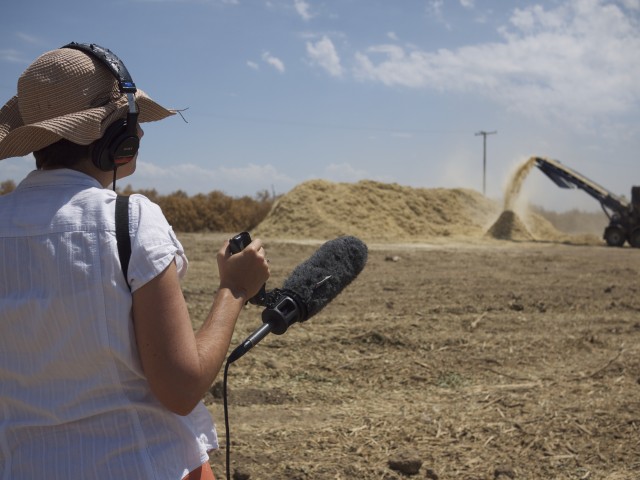
Editor's note: KQED's The California Report took a road trip earlier this month to explore the Central Valley. Here, Sasha Khokha, our Central Valley bureau chief, reflects on covering a vast and vastly complex region that few people slow down to see.
I have a friend from Berkeley who calls the San Joaquin Valley "The Great Nothing," and I think that's the way most Californians see the place where I live and work. There's little to see here, the thinking goes, except endless farmland fading into a hot, stinky haze. Coming over the Tehachapis from L.A. or the Altamont Pass from the Bay Area, most of those whizzing past on I-5 or Highway 99 view the valley as something to endure on their way to somewhere else.
Sure, there's a grain of truth to that caricature. It is hot in the valley (except when it's cold and foggy in the winter). The valley is farm country (some of the most productive in the world). The air is bad (some of the worst in the nation). But, like every simplistic picture, the image most people have of the valley misses just about all of its character and complexity.
When The California Report opened a Central Valley Bureau in Fresno more than a dozen years ago, it was because KQED recognized how important this region was becoming to the entire state. It's home to some of the fastest-growing cities in California. It's at the center of many key policy debates, from immigration to poverty and hunger, to water and high-speed rail. It's a place where farming has created great wealth, while workers in the fields may not know how they'll pay tomorrow's grocery bill or next month's rent. And it’s a place where a reporter can’t just parachute in. You have to call this place home to really understand its complexities — which is what I’ve done for the last decade.
The valley’s towns are sometimes no more than a few homes clustered around a crossroads. People here are often excluded from policy debates in Washington, in Sacramento or even in their own communities. I've talked to farmers who worry about surviving the drought, and community members worried about pesticide exposure. I’ve talked with parents worried because their teenage children play sports on days when air quality is at emergency levels and women farmworkers who pay a chilling price to get and keep their jobs, risking sexual assault in the fields.